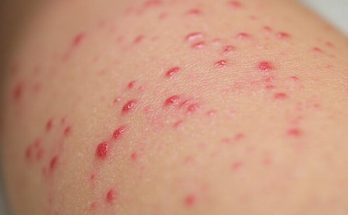Tick infestations are more common than you might think, and those tiny jelly-like balls you spot around your yard could be a sign of trouble brewing. These small clusters are likely tick eggs, laid by female ticks in ideal conditions. If left untreated, they can hatch into larvae and continue through their life cycle, posing a risk to your home, garden, pets, and family. Acting quickly to identify and remove tick eggs can help prevent tick-borne diseases like Lyme disease from affecting your loved ones. Here’s everything you need to know about spotting tick eggs and dealing with them effectively.
Identifying the Presence of Tick Eggs

At first glance, tick eggs can be tricky to spot. They’re typically small, brownish-red clusters that resemble piles of tiny jelly balls or miniature beads. You’ll often find these clusters in dark, moist areas like garden beds, under piles of leaves, in tall grass, or hidden within crevices around your home.
Female ticks can lay thousands of these eggs in secluded spots with the best chance of survival. Once they hatch, these larvae progress into nymphs and eventually into adult ticks. Spotting them early is crucial to preventing a full-blown infestation, so knowing what to look for can make all the difference.
Health Risks Associated with Tick Eggs
While the eggs themselves don’t pose a direct threat to humans, they are a warning sign of a potentially bigger problem. Adult ticks are known carriers of serious illnesses like Lyme disease, Rocky Mountain spotted fever, and other tick-borne diseases that can be transmitted to humans and pets through bites.
A single tick bite can lead to long-term health issues, especially if the disease goes undiagnosed. Eliminating tick eggs before they hatch into larvae can greatly reduce the risk of tick-borne diseases and create a safer environment for you, your family, and your pets.
Immediate Steps to Take if You Find Tick Eggs
Don’t panic if you spot a cluster of tick eggs, but do take action quickly. Here are the immediate steps you should follow to ensure the problem doesn’t escalate:
- Avoid touching the eggs with bare hands. Although tick eggs don’t carry diseases, it’s always wise to handle them with caution.
- Use gloves or a tissue to handle the egg cluster. Carefully remove the eggs and place them in a sealed plastic bag to prevent any further spread.
- Clear the surrounding area. Remove any leaf litter, grass clippings, or other debris where additional tick eggs might be hiding.
After removing the visible eggs, you can move on to more thorough removal methods to prevent the problem from worsening.
Effective Methods for Safe Tick Egg Removal
To ensure you’ve fully eradicated the tick eggs and prevent a larger infestation, here are some tried-and-true methods for safe and effective removal:
1. Use a Diluted Bleach Solution
Mix one part bleach with four parts water and spray it over the area where the eggs were found. This solution kills any remaining eggs that you might have missed during the initial removal. However, be cautious using bleach near plants, as it can damage them. Make sure to apply it only where necessary.
2. Vacuum Thoroughly Indoors
If you’ve discovered tick eggs inside your home, vacuuming is one of the best ways to remove them. Vacuum around baseboards, crevices, and other hidden areas where eggs might be lurking. Dispose of the vacuum bag immediately to prevent any eggs or ticks from re-entering your home.
3. Use Diatomaceous Earth for Outdoor Areas
Diatomaceous earth is a natural, non-toxic powder that’s effective at killing ticks by dehydrating them. Sprinkle it around areas where you’ve found tick eggs, such as garden beds, under piles of leaves, or along the edges of your yard. This eco-friendly solution is safe for pets and humans, making it a great choice for outdoor tick prevention.
4. Consistent Monitoring and Removal
Consistency is key to controlling ticks. Regularly monitor your yard, garden, and indoor areas for any signs of tick eggs, and remove them immediately. This proactive approach will help prevent these eggs from hatching and progressing through their life stages, significantly reducing the risk of an infestation.
Preventative Measures to Avoid Tick Infestations

Once you’ve tackled the immediate problem, it’s time to focus on prevention. Taking a few preventative steps can help keep your yard, home, and pets free from ticks and reduce the likelihood of future infestations.
Maintain a Clean Yard
Ticks thrive in shady, moist environments. Keep your lawn mowed regularly, and remove any tall grass, leaf litter, or overgrown shrubs where ticks might hide. Clearing out these hiding spots reduces the chances of ticks finding suitable spots to lay eggs.
Create a Protective Barrier
If your yard borders a wooded area, consider creating a barrier using gravel or wood chips around the perimeter. This discourages ticks from crossing over into your lawn and garden, helping to keep them away from areas where your family and pets spend time.
Vacuum Frequently Indoors
To prevent any lingering eggs or ticks from hatching inside, make a habit of vacuuming high-traffic areas, particularly if your pets come indoors. Dispose of the vacuum bags immediately to avoid reintroducing ticks into your home.
Regularly Check Pets for Ticks
Pets are often the first targets for ticks, so check them frequently, especially after they’ve been outdoors. Use pet-safe tick repellents or collars to protect them from ticks. Regular grooming and bathing can also help in spotting any ticks before they settle in and lay eggs.
By following these preventative measures, you can greatly reduce the risk of tick infestations and protect your family from the health hazards associated with ticks.
When to Seek Professional Pest Control

If, despite your best efforts, you find yourself dealing with repeated egg clusters or a large-scale infestation, it might be time to call in professional pest control. Tick infestations can be tricky to manage on your own, especially in cases where the ticks have established themselves both indoors and outdoors.
Professional pest control services offer:
- Thorough Inspections: Experts will examine your property to identify tick hotspots.
- Targeted Treatments: Specialized treatments are used to eradicate ticks and their eggs effectively.
- Long-Term Solutions: Professionals can offer advice and solutions to prevent future infestations, giving you peace of mind.
By relying on professional expertise, you gain a more comprehensive approach to dealing with ticks and ensuring your home and yard remain safe for everyone.
Conclusion: Take Action Before It’s Too Late
Spotting a small cluster of jelly-like balls in your yard or garden might seem harmless, but it could be the start of a tick infestation. Acting swiftly to remove and destroy tick eggs can prevent these pests from hatching and becoming carriers of serious diseases. By learning to identify and handle tick eggs, using effective removal methods, and taking preventative steps, you can protect your family, pets, and home from the dangers associated with ticks. Don’t wait until it’s too late—take action now to keep your space tick-free and enjoy peace of mind in your home and garden.



